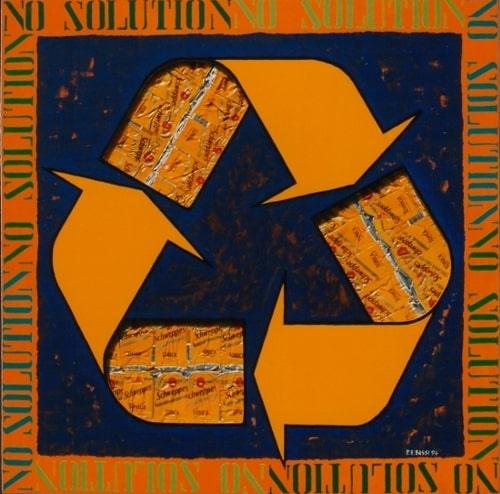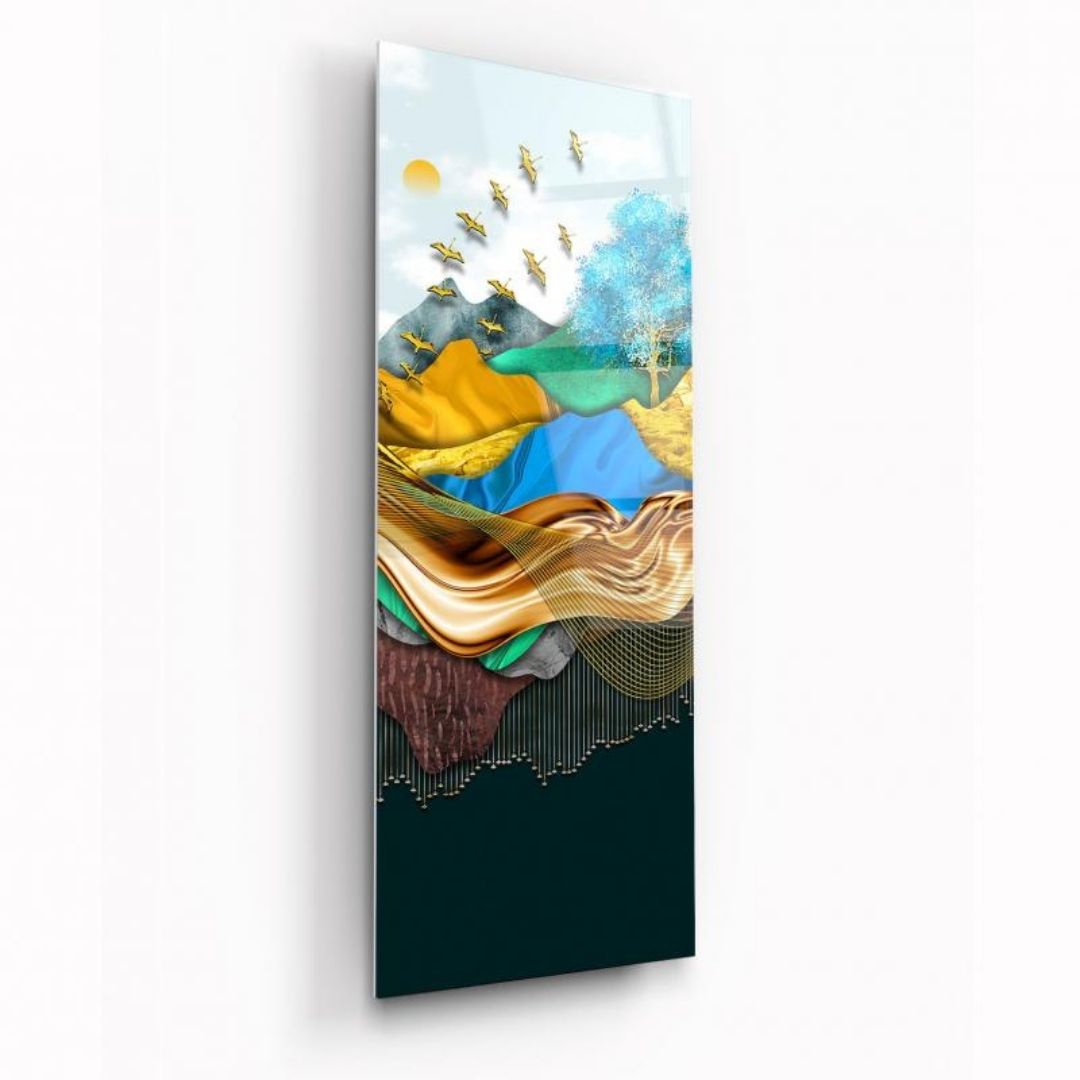Creating art using recycled materials has increasingly become trendy to address the issues of sustainability and climate change. Great amounts of waste and many materials not being able to be recycled have led many artists to seek solutions in artistic endeavours. Art with recycled materials promotes values centred around environmentally conscious ways of living.
The climate and biodiversity crisis poses several great challenges, and recycling certain materials is a major part of the problems related to it. Plastic-derived materials do not dissolve in nature. As a result, this waste ends up in landfills, doing nothing but polluting the environment. Artists that produce recycled material art aim to draw attention the environmental degradation.

The concept of sustainability has become an integral part of many artistic movements. Recycled art generates art from recycled materials through upcycling or downcycling. The main objective of these two approaches is to prevent the destruction and retain the value of materials.
Recycled art projects include slowing down the degradation of the used materials (downcycling) and increasing their longevity (upcycling). These innovative interventions have been a rich source of inspiration for many artists across the world. The critical message behind art using recycled materials is reducing excessive consumerism and preventing environmental pollution.

Art with Recycled Materials
Recycled art focuses on the use of materials such as plastics, cardboard, glass, and metals. Art with recycled materials transforms these into novel forms. It goes beyond simple ways of recycling the original materials and creates objects with added social and cultural values.
The use of discarded materials is a primary tool for powerful discourses that can raise awareness of the numerous challenges posed by the environmental crisis. Recycled art unleashes the power of art as a medium to present solutions to a collective problem.

Recycled material art utilises different materials several times. The underlying reason for that is to give a societal message that underlines the urgency of the issue of climate change and cultivate meaningful action.
Individual behavioural change is a key part of climate change action and is also very difficult to inspire. Therefore, the recycled art movement serves as motivation for people to change the way they live and relate to their environment.

Recycled Art Projects
Recycled art comes in all forms. Art using recycled materials can be done multidisciplinary. As this artistic style is not constrained by any limitations, it can be reflected in different formats.
Recycled art projects can include paintings or sculptures. Recycled art can be made from different kinds of materials ranging from metals, clothes, electronics, or waste that would otherwise end up in a landfill.

Recycled art projects aim to contribute to extending the materials’ lifetime and raising awareness of human actions leading to environmental degradation. Creating art using recycled materials is particularly powerful in raising awareness among young children. It encourages young people to think about the consumerist culture and the particular problems associated with it.
Major themes that are tackled through recycled art are the environment and biodiversity crisis, overconsumption, and sustainable living. By using discarded materials that are difficult to recycle and are thrown away, art from recycled materials encourages people to choose reusable objects or be mindful of their recycling habits.

Some examples of recycled art and design include kitsch and marginal creations made by resourceful artists. Recycled art projects range from plastic bottle pyramids, newspaper furniture, trash sculptures, and recycled charity bracelets.
Artists Working on Recycled Art
The recycled art movement is embraced by many artists and continues to inspire people. The artists working on recycled art aim to make a positive impact on the ecological and sociological state of the world in regard to the environment.
From garbage, used textiles, and plastic bottles to old electronic devices, here are some of the most influential artists who create influential works with recycled materials:

Tim Noble and Sue Webster
Tim Noble and Sue Webster are a British couple who produces recycled art. They are known for their artwork of sculptures made out of recycled trash. Shadow Sculptures is their signature work, where they put together diverse materials ranging from metals and rubbish.

Wim Delvoye
Wim Delvoye is another renowned artist from Belgium. He transforms used objects into different forms to increase their sustainability. He is known to work with materials like tires, metals, dump trucks, and steel caps to turn them into recycled art.

Subodh Gupta
Sudobh Gupta is an Indian artist who creates sculptures made from used materials. He focuses on cultural aspects of materials and mostly works with objects that are of importance in Indian culture. His art aims to highlight the cultural significance of these objects while integrating art using recycled materials into his work.

Yuken Teruya
Yuken Teruya is another noteworthy artist who produces recycled art projects. His work is renowned for addressing issues related to consumerism and capitalism. He does this through Kirigami, an ancient form of Japanese art that includes three-dimensional designs made out of paper.

Ha Schult
Ha Schult is a German artist whose works centre around the use of recycled materials such as garbage. His famous works are his art collection Trash People and Save The Beach Hotel. Schult has been greatly influenced by pop art in his work. He conveys messages on consumerism and ecological consciousness while criticising the habits of western society.

Steven Rodrig
Steven Rodrig is another influential artist who works with thrown-away materials such as circuit boards and electronics. As an artist with a background in structural mechanics, he looks at recycled art from a wide perspective.
He is known for making sculptures out of old computers, radios, and mobile phones. His aim is to underline the waste generated by the electronic parts of thrown-away objects due to the rapid advances in technology.







Leave a comment
All comments are moderated before being published.
This site is protected by hCaptcha and the hCaptcha Privacy Policy and Terms of Service apply.